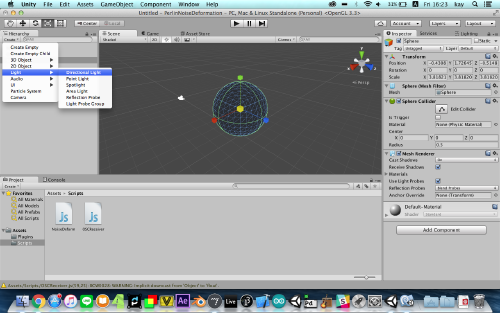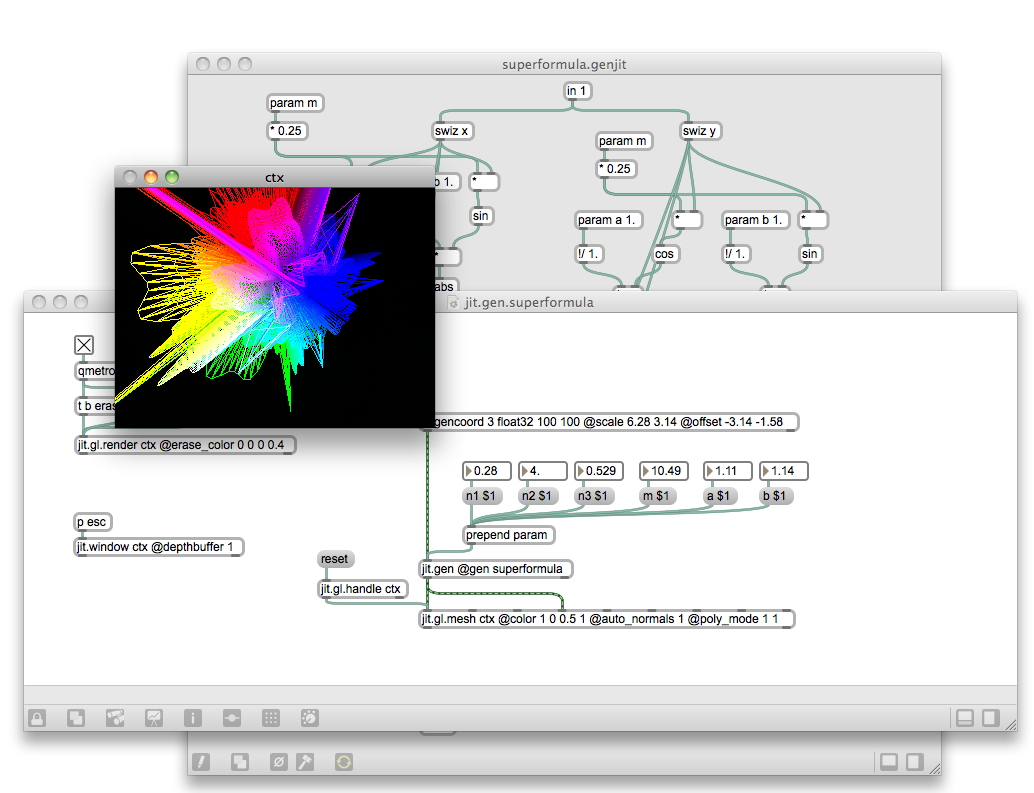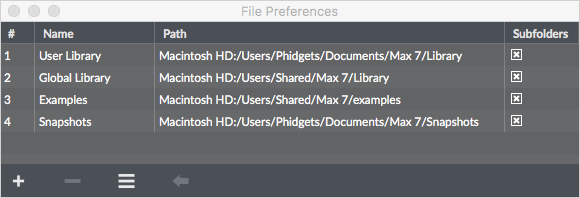Cnmat's Max/msp Externals For Mac
Jamoma - Building Max/MSP externals Jamoma Modular Patching and Programming for Realtime Media Building Max/ MSP externals Jamoma has become a fairly large project with a number of dependencies. This page describes how to go about to compile the externals on both Mac and Windows. On the Mac platform Assuming you did follow the, and, first make sure you do the steps below as an admin user or give yourself write permission to /Library/Frameworks and /Applications/Max5. From the main Jamoma repository, navigate to the “Tools” folder using the following command: cd Tools For users incomfortable with the Terminal, just type the command cd followed by a space and drop the Tools folder from the Finder to the Terminal window. To build all Jamoma projects (i.e. All its subprojects), use the provided Ruby script by running ruby build.rb Deployment clean Alternatively, you can use “Development clean” as arguments to the script if you want to build on Development mode and be able to debug externals from XCode.

This will build externals, libraries and frameworks. You may have to do the last step twice to get everything to build.
There are also scripts to build only one Jamoma sub-project at a time (e.g. Only DSP or modular). To do so, navigate to it, e.g.
Cd /Modules/DSP to build the DSP framework and externals, and then run its specific build.rb script by running (while being in its folder): ruby build.rb Deployment clean On the Windows platform NOTE: You first need Cygwin to be set up properly (needs to have the ruby, git, gcc, packages). You also need to have Microsoft Visual C 2008 Installed. Open the Cygwin terminal and run the same scripts as described for building on the Mac.
Difficulty easier than most. Estimated Time an hour if you already have MAX/MSP several to build an arm Skills Required. follow directions. Don't get bored easily. enjoy using MAX/MSP Parts Required. Lynxmotion SES robotic arm. I made my own using parts found at Trossen Robotics.
2 phidget 4 servo controllers Tools Required. MAX/MSP www.cycling74.com I added an arm to Vivian. In this series of videos you can see how I use MAX/MSP to program the arm. I know there are those out there who feel that it using software isn't as good as coding from scratch, but I feel that I have a lot of capability using MAX/MSP.Especially given the library of phidget objects that are supported. DB youtubefdZ7PEyjdo/youtube youtubenMyNPDjZ8yQ/youtube youtubefKz4DdmiDU/youtube The above software works to control 2 phidgetservo controllers.
Cnmat's Max/msp Externals For Machine
There are memory states so that the arm will either move horizontally or vertically in response to the mouse. Using a program like wiiremote you can then control the arm using a wiicontroller. I'll try to post close up pictures of the arm in the next few days.
Live Home 3D Pro brings more functionality and opportunities to the world of home design on your Mac. Live Home 3D is powerful and easy to use home and interior design software for Windows, iOS and macOS. Live home 3d pro for mac.
If you want a copy of this MAX patch as an application, send me your serial numbers and I'll post the patch when I have time. Awesome tutorial db! I've always wondered how people program in MAX/MSP. I'm making my way through the videos and had a few questions. Sorry, I have no experience whatsoever in MAX/MSP, so my apologies ahead of time if these are totally newbie questions I missed how you add the Phidget library in MAX/MSP? When you install the Phidget library on your Mac, does it automatically show up in MAX/MSP? If so, then does the Phidget objects show up under your object box menu that pops up?
In the first video towards the end, you are using a message box to connect to the PhidgetServo object. At the end of the message, you have '0' and '$1'. I didn't quite catch what these are both for. Maybe I did though. Is the '0' the servo port number and the '$1' a placeholder that gets a value from the number box?

I'm checking out your other two videos now. I missed how you add the Phidget library in MAX/MSP? When you install the Phidget library on your Mac, does it automatically show up in MAX/MSP? If so, then does the Phidget objects show up under your object box menu that pops up? I should probably make a tutorial on this subject. When you install MAX/MSP on either a PC or a Mac, it installs a folder on your harddrive. On a PC the folder is called 'cycling74', and on a Mac I believe it is called 'MAX'.
Inside of this folder there is another folder called 'externals'. Any patch that is inside of the externals folder is loaded when MAX starts up. When you download the phidgets library you simply have to copy the patches from your download folder into the externals folder. There is also a folder labeled 'help'.
Most patches come with a help file that shows you how to use them. When you select 'get help on 'blah' it opens the help file in the help folder if there is one. In the first video towards the end, you are using a message box to connect to the PhidgetServo object. At the end of the message, you have '0' and '$1'.
I didn't quite catch what these are both for. Maybe I did though. Is the '0' the servo port number and the '$1' a placeholder that gets a value from the number box? Message boxes in max are pretty cool.

You can pack numbers into streams, the $ means input and the 1 means the first integer that comes into the message box. Sending a number to the input triggers the message to output its contents. So if you have a message box that says, 'setMotorPosition 0 $1', and input the number 3, that triggers the message box to output 'setMotorPosition 0 3'. The phidgetservo object then tells the phiget 4/0/0 to set the 1st servo to the position 3.or I think 3 degrees from absolute left. I have been using MAX for about 15 or so years now. Its pretty much all that works for me because I'm dyslexic as all get up and can't keep line after line of code straight.